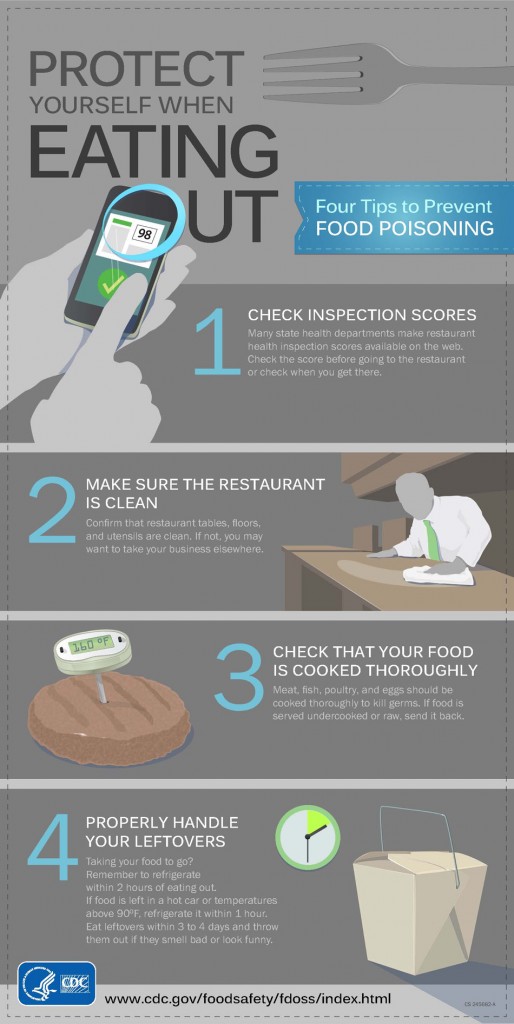It’s no doubt that here at the Virginia Department of Health, we do all we can to make sure restaurants are complying with safety standards to keep the public from getting sick! Still, there are things you can look for in a restaurant to make sure your food is as safe as can be:
 Check out the inspection reports from your district’s expert Environmental Health Specialists at the VDH Restaurant Inspection Website. Keep in mind that an inspection is only a snapshot of what is going on in a food establishment.
Check out the inspection reports from your district’s expert Environmental Health Specialists at the VDH Restaurant Inspection Website. Keep in mind that an inspection is only a snapshot of what is going on in a food establishment.- “First impressions last a lifetime.” Make sure the restaurant appears clean. While a clean environment does not necessarily mean a germ-free food menu, it usually is a good indicator of the care put into meal preparation for patrons.
- Make sure your food is thoroughly cooked. While we know that you probably don’t carry a food thermometer in your handbag, there are some ways you can ensure food is at a safe temperature:
- Have your server bring out a thermometer. Honestly, a thermometer is the only foolproof way to make sure your food is at the proper temperature.
- Make sure your meats appear thoroughly cooked. Pink colors in chicken and excess blood or juice is not usually a sign of proper meat temperatures.
- Touch the food to see if it is warm. Foods that are left out too long enter the “danger zone” for bacterial growth even if they were originally cooked at the proper temperatures.
- Send food back to hit the grill if you suspect any of the above triggers. It’s better to be safe than sorry when it comes to temperatures!
- Everybody loves leftovers! But make sure your leftovers love you back by:
- Refrigerating leftovers as soon as you get home. Don’t leave food unrefrigerated for more than two hours.
- Avoiding leaving your leftovers in the hot car after dining out.
- Eating leftovers (and heat to the proper temperatures) within four days or throw them out!
Checking the Menu

Make sure you check the VDH Restaurant Inspection Website for reports from your local health district. You can also view public website reviews like Yelp and TripAdvisor to see other patrons’ experiences while dining at your favorite spot. Finally, if you see something you think is unsafe in a restaurant, report it to the Virginia Department of Health at mymealdetective.com and your local health department will check it out!
To spot a consumer advisory, look for asterisked (*) menu items accompanied by a disclosure similar to this:
Consuming raw or undercooked meats, poultry, seafood, shellfish, or eggs may increase your risk of foodborne illness, especially if you have certain medical conditions.

